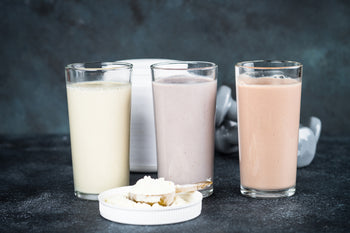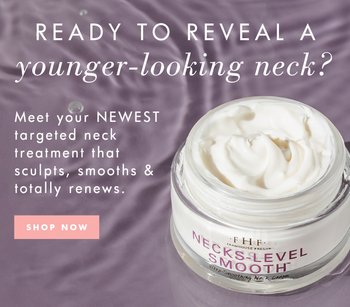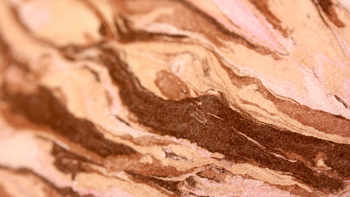 Categories
CategoriesDiet & Exercise
Discover More Articles

It’s no secret that stress can take a toll on our body, mind, and brain. December is not the month to throw your self-care and mental health priorities out the window.

5 Ways to Stay Motivated This Winter
When the seasons change it suddenly becomes harder to get out and exercise. Winter fitness programs aren’t the easiest to stick to, but they’re imperative to your overall health and well-being. So with that in mind, let’s take a look at what you can do to stay motivated and successful with your winter fitness goals.

How to Detox After Holiday Feasts
If you’re having a hard time committing to your diet over the holidays, you’re not alone. And the good news is you don’t have to be perfect to maintain your weight over the holiday season. Try following these simple detox tips after each scrumptious holiday meal and start the new year fresh and ready to finally achieve your health and fitness goals.

High Protein Meal Replacement Shakes
Meal replacement shakes aren’t just low in calories, they’re high in essential nutrients your body needs to keep yourself nourished and your stomach feeling full, while helping also you maintain or lose weight. Protein provides numerous benefits to your body, including fueling the entire body, helping build muscle mass and being a key component to essential substances your body needs, like antibodies and blood.

Skin Cycling: all about the newest trend
The skin cycling hashtag has been viewed over 3 billion times on TikTok—and dermatologists say it's a strategy worth trying.The term "skin cycling" is all about taking a cyclical approach to your facial skincare routine.

Get ready for a plumper, perkier-looking neckline
Meet our new luscious neck cream featuring our proprietary elasticizing bioactive plant blend that targets lines and texture, so your neckline appears smoother, renewed & 10 years younger looking!

TRENDING MAKEUP HACK: BLUSH & BRONZER AS EYESHADOW
By selecting shades that complement each other, you can achieve a harmonious and polished makeup look without the need for multiple products.

5 signs you need more electrolytes
Electrolytes help with hydration by ensuring the body can actually absorb and use the water you drink—preventing dehydration in the presence of sufficient water intake.

Ring In 2025 With ✨ Glowing ✨ Skin…And FREE Boosters!

Better Ingredients, Better You
Your health goals aren’t one-size-fits-all, so your supplements shouldn’t be either. That’s why we designed the Power Line to target different pillars of performance and wellness — from appetite control to anti-aging to athletic power.

Recent studies on the types and number of beneficial microbes that inhabit each of our guts have proven fascinating. It turns out that the collection of trillions of tiny beneficial bacteria, viruses, and other microbes could be called another organ, so important a role does it play in our overall health.
What is the Microbiome?
Did you know that there are more beneficial microbes on and in your body than you have cells? Not only are your cells outnumbered, they’re outnumbered by a factor of 10:1. That means you are literally covered with microbes.
Fortunately, that mass of bacteria, fungi, archaea, and viruses are working for your health and wellbeing as long as they are in balance. All those tiny little critters are working symbiotically with your body to boost your immune system, prevent pathogens from entering the body, protect from autoimmune disorders, keep you at a healthy weight, and detoxify your organs.
Your digestive system alone contains tens of trillions of microbes, which live and thrive along the walls of the small and large intestine. In your gut specifically, which is the large intestine (colon), tens of trillions of microbiota form the gut microbiome. Your microbiome will contain microbes that are common among all people as well as a mix of microbiota that are unique to you. This microbiome is so influential in your body that it affects not only your physical health but your mental health.
The Formation of the Microbiome
Unlike organs such as your liver and kidneys, which are already formed and functioning by the time you are born (assuming normal gestation time and normal development), the microbiome is built from birth onward. Microbes in the birth canal, breast milk, and on the mother’s skin all become part of the newborn’s growing and developing microbiome. [More information on that subject here]
Children who are born by C-section and children who are fed infant formula have very different microbiomes than children born vaginally and who are fed breast milk. In February, 2016, a report was published in Nature Medicine about a small study being conducted wherein a gauze pad soaked with the mother’s microbes was rubbed all over newborns delivered by C-section.
The purpose of the study was to see if newborns could benefit from receiving microbes from their mothers as they begin building their own microbiomes. While this study has not concluded, initial findings are very positive. Children born by C-section could still receive the beneficial microbes they missed out on in the birth canal in order to protect them from disease and assist them in proper digestion.
By the age of three, a child’s microbiome has become fairly stable and closely resembles that of an adult.
Your microbiome changes and evolves over time depending on your diet, age, and environment. This is good news if you want to take steps to become healthier and work to reduce or eliminate symptoms of disease or illness! By changing what you eat, you can work to put your gut into a healthier, happier state.
Leaky Gut: Product of the Western Diet
You may have heard of the term “leaky gut.” What is it and how does having a leaky gut affect your overall health?
As we’ve seen, a healthy gut is one in which trillions of beneficial microbes thrive. These microbes produce the mucus lining of the gut, create vitamins as they break down food, and positively interact with your hormones, among other tasks. When the gut is healthy, your body can absorb nutrients efficiently and will effectively utilize those nutrients to feed the cells of the body.
Our Western diet, which tends to be high in simple carbs and low in fiber, is a recipe for gut disaster. Processed and refined foods and drinks enjoy prime status while providing little nutritional value. Few people manage to consume even the minimal serving amounts of fresh vegetables and fruits in a day. Instead, we crave the processed fats, sugars, and salts in junk food and packaged foods.
The Western diet might be convenient, but it’s terrible for you.
The Western diet decimates the gut by encouraging an imbalance in the microbiome. When fed sugar and processed foods, some microbes thrive and flourish at the expense of others, causing a lack of diversity in the microbiota. Microbes such as candida yeast and others reproduce rapidly because of the simple sugar content of the food you eat. This imbalance causes cravings for nutritionally deficient foods as well as alcohol and drugs (legal or illegal). The tiny fingers, or villi, that line the gut and absorb nutrients break down, and the mucus lining dries up. The exposed gut lining begins to crack open in places.
Through these cracks, tiny particles of undigested food enter the bloodstream. In a healthy gut, only the simplest, most useful components of nutrition are allowed into the bloodstream. When food particles get into the bloodstream, however, it sets off the body’s immune system. The body rushes to fight the unrecognized intruders, which causes inflammation.
Constant inflammation throughout the body caused by a leaky gut is theorized to incite a long list of illnesses and chronic physical and mental conditions, from autism to schizophrenia, and from asthma to eczema. In fact, many doctors now believe that all disease begins in the gut.
Facts about Gut Enterotypes
In 2011, a study was published in Nature that concluded that all humans fall into one of three gut enterotypes, or “a classification of living organisms based on its bacteriological ecosystem in the gut microbiome.” [Wikipedia]
In the study, Peter Bork and his associates tested the fecal samples of 22 people from Denmark, France, Italy, and Spain, and combined their findings with research already done on people in Japan and the United States. Based on their analysis, they concluded that humans fall into one of three categories based on the prevalence of a dominant gut bacteria: Bacteroides, Prevotella, and Ruminococcus. Research conducted soon after the study was published subsequently eliminated Ruminococcus as an enterotype.
This conclusion was exciting because it presented the idea that medicine and diet could be customized to each enterotype to provide the greatest benefit. The thought was that a doctor could ask you about your blood type, your gut enterotype, and any allergies you have in order to treat you with even more precision.
Further studies, however, have shown that there are no distinct enterotypes. Instead, gut microbiomes lie along a spectrum, with a dominant bacteria mixed with a diverse population of other types of microbes. While each person has a unique microbiome, people in the West tend to have guts dominated by Bacteroides, while people who eat mostly plant foods (whole and cooked) have guts dominated by Prevotella.
Beyond that, however, there is so much diversity that you can’t classify any group of people as belonging to an enterotype. In fact, by changing your diet, you can change the dominant bacteria in your microbiome; so even if enterotypes were a thing, they would not be static, like blood type.
The Care and Feeding of Your Microbiome
Researchers have posited that your microbiome should really be looked on as another organ. It is such an important part of your gut makeup that it not only directly affects your physical health, but it also affects your emotional and mental health. A healthy microbiome keeps you at a healthy weight, produces crucial vitamins, nourishes your cells, and helps you effectively deal with life stresses. An unhealthy microbiome produces inflammation throughout the body, which leads to or exacerbates multiple chronic illnesses as well as mental issues such as depression, ADHD, schizophrenia, and even dyslexia.
Obviously, caring for your gut should be your primary concern. Feeding it foods that support a diverse range of microbiota is important. These foods contain both prebiotic and probiotic elements, which we will discuss in more detail in a future post. In a nutshell, however, eating lots of raw and lightly cooked plants and naturally fermented foods will feed a healthy microbiome, as will avoiding junk and processed foods and sugars.
As you work to change your diet, you can give your gut a further boost by taking quality probiotic supplements to support a diverse microbiome.
